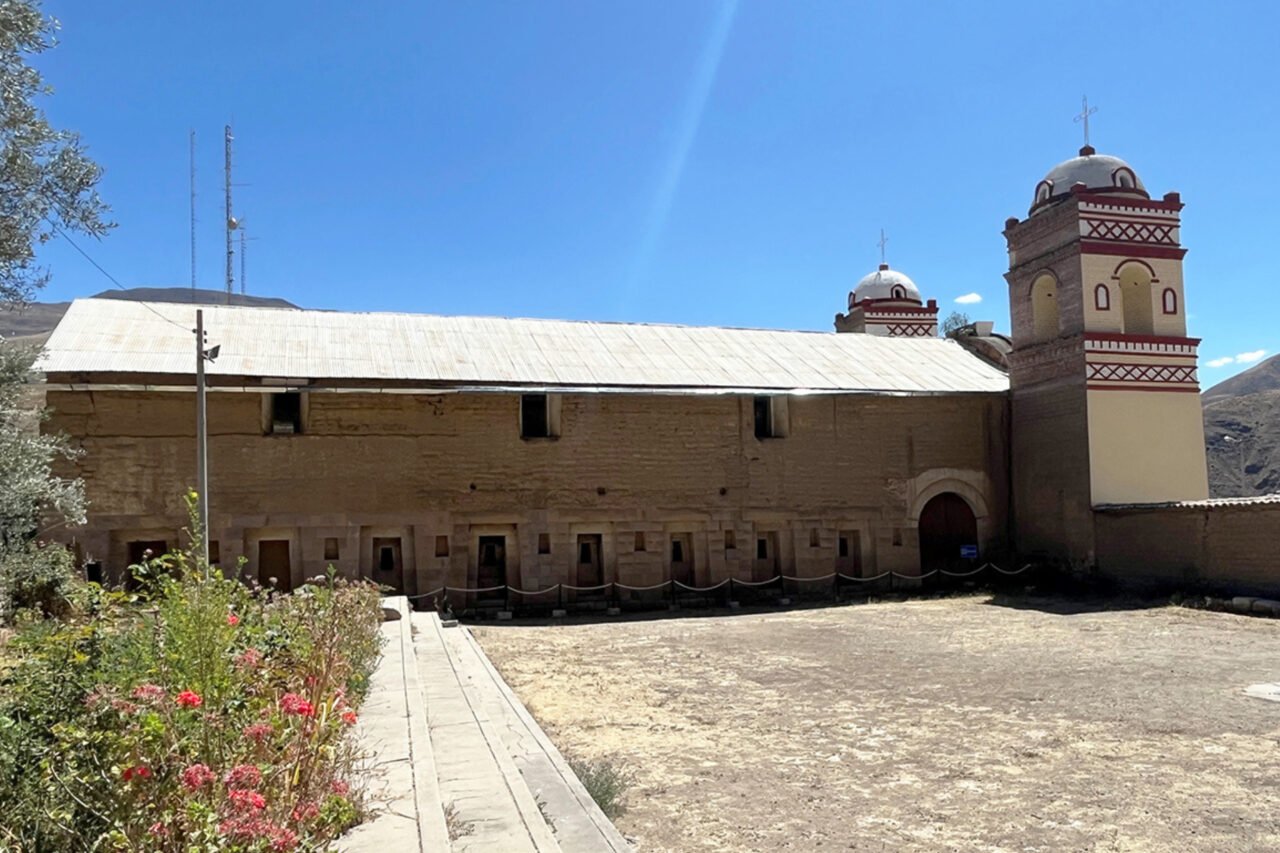Science
Researchers Uncover Acoustic Secrets of Ancient Incan Structure

In the remote town of Huaytar á, Peru, researchers are uncovering the unique acoustic properties of a three-walled Incan structure known as a carpa uasi. This building, which underpins the Church of San Juan Bautista, represents a fascinating intersection of architecture and sound. While the Incan Empire is often celebrated for its monumental sites like Machu Picchu, this lesser-known construction may reveal new insights into how the Incas interacted with sound.
The carpa uasi, which translates to “tent house,” is believed to have been designed to amplify low-frequency sounds, such as drumming, with minimal reverberation. According to Stella Nair, an associate professor of Indigenous arts of the Americas at the University of California, Los Angeles, this research marks the first time scholars will explore the sonic values embedded within this structure. “We’re exploring the possibility that the carpa uasi may have amplified low-frequency sounds,” Nair explained in a university statement. “With this research, we’ll be able to tell what the Incas valued sonically in this building.”
The Inca were a pre-Hispanic civilization that thrived from the 15th to early 16th centuries. Their empire stretched along the western coast of South America, from modern-day Ecuador to Chile. The distinctive three-walled design of the carpa uasi likely allowed sound to be directed toward its open side, creating a unique auditory experience.
Sound as a Cultural Element
Nair emphasized that many people focus primarily on the architectural achievements of the Incas, often overlooking their understanding of sound. “Many people look at Inca architecture and are impressed with the stonework, but that’s just the tip of the iceberg,” she stated. “They were also concerned with the ephemeral, temporary, and impermanent, and sound was one of those things.” The significance of sound in Andean and Incan cultures was so profound that builders compromised some stability in the structure to enhance its acoustic potential.
Though researchers have long recognized the existence of the carpa uasi, Nair and her colleagues are among the first to understand its ability to magnify sound. This remarkable structure has survived for over 600 years, largely due to the stabilizing influence of the church built atop it. The team is currently developing a model to illustrate how sound would have propagated through the carpa uasi and beyond its walls.
Revisiting Historical Narratives
The focus on sound studies can reshape our understanding of historical narratives. “Sound studies are really critical because we tend to emphasize the visual in how we understand the world around us, including our past,” Nair concluded. “But that’s not how we experience life—all of our senses are critical.” Incorporating sound into the study of ancient civilizations allows for a more holistic view of how these societies functioned and perceived their environment.
As researchers continue to delve into the acoustic properties of the carpa uasi, insights gained may not only enhance our appreciation for Incan architecture but also enrich the broader discourse on cultural heritage and its multifaceted dimensions.
-

 Sports2 weeks ago
Sports2 weeks agoSteve Kerr Supports Jonathan Kuminga After Ejection in Preseason Game
-

 Politics2 weeks ago
Politics2 weeks agoDallin H. Oaks Assumes Leadership of Latter-day Saints Church
-

 Business2 weeks ago
Business2 weeks agoTyler Technologies Set to Reveal Q3 2025 Earnings on October 22
-

 Lifestyle2 weeks ago
Lifestyle2 weeks agoDua Lipa Celebrates Passing GCSE Spanish During World Tour
-

 Health2 weeks ago
Health2 weeks agoRichard Feldman Urges Ban on Menthol in Cigarettes and Vapes
-

 Entertainment2 weeks ago
Entertainment2 weeks agoZoe Saldana Advocates for James Cameron’s Avatar Documentary
-

 World2 weeks ago
World2 weeks agoD’Angelo, Iconic R&B Singer, Dies at 51 After Cancer Battle
-

 Science2 weeks ago
Science2 weeks agoChicago’s Viral ‘Rat Hole’ Likely Created by Squirrel, Study Reveals
-

 Lifestyle2 weeks ago
Lifestyle2 weeks agoKelsea Ballerini Launches ‘Burn the Baggage’ Candle with Ranger Station
-

 Health2 weeks ago
Health2 weeks agoCommunity Unites for Seventh Annual Mental Health Awareness Walk
-

 Business2 weeks ago
Business2 weeks agoMLB Qualifying Offer Jumps to $22.02 Million for 2024
-

 Entertainment2 weeks ago
Entertainment2 weeks agoNetflix’s The Hunting Wives Season 2 Set to Deliver More Twists









